The wild beauty of foraged flowers
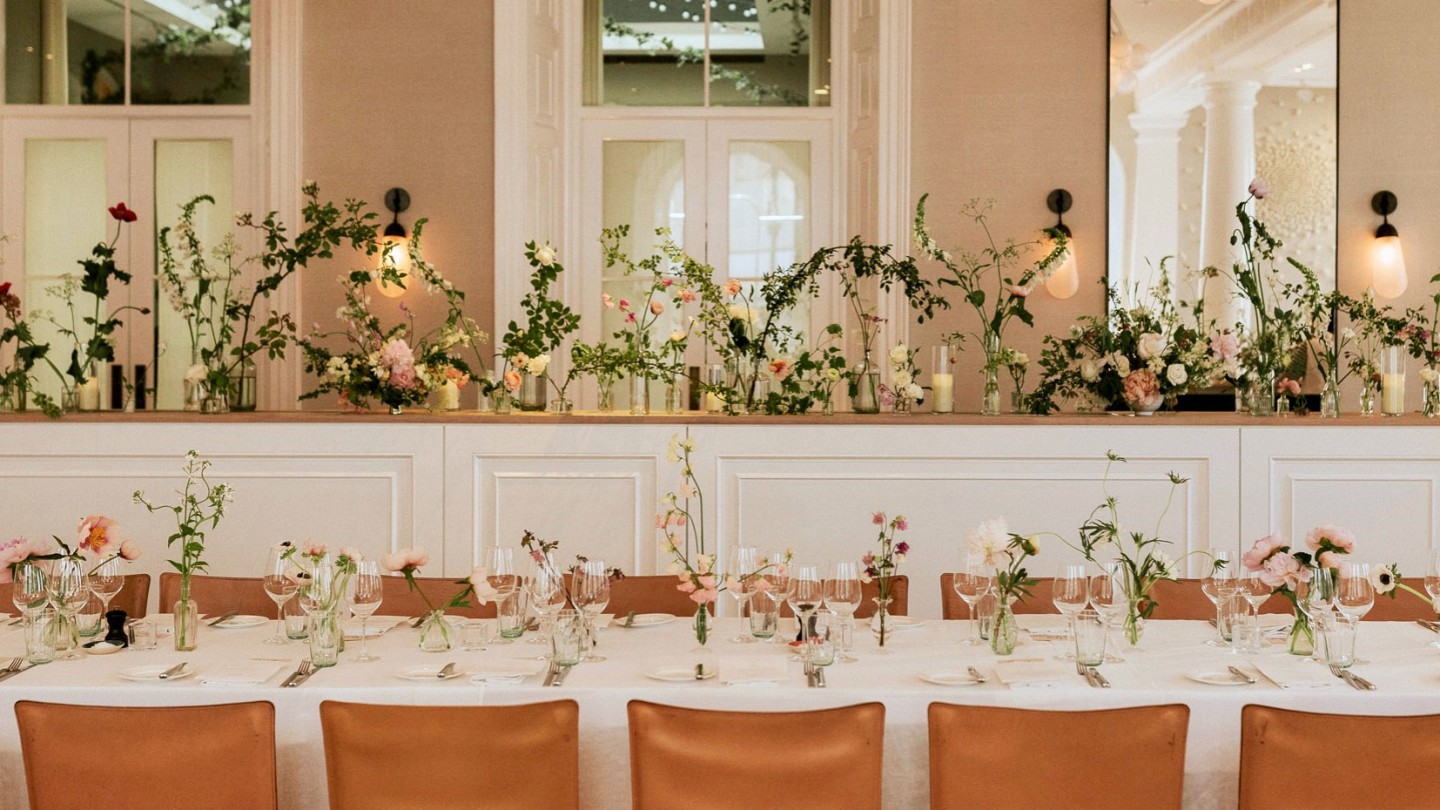
Simply sign up to the Sustainability myFT Digest -- delivered directly to your inbox.
When the Duke of Windsor married Wallis Simpson at the 16th-century Château de Candé in the Loire Valley in June 1937, Simpson tasked Constance Spry with the floral decoration. Armfuls of white lilies were transported from Paris, but it was the branches that Spry foraged from woodland around the château that provided most of the foliage arranged into urns.
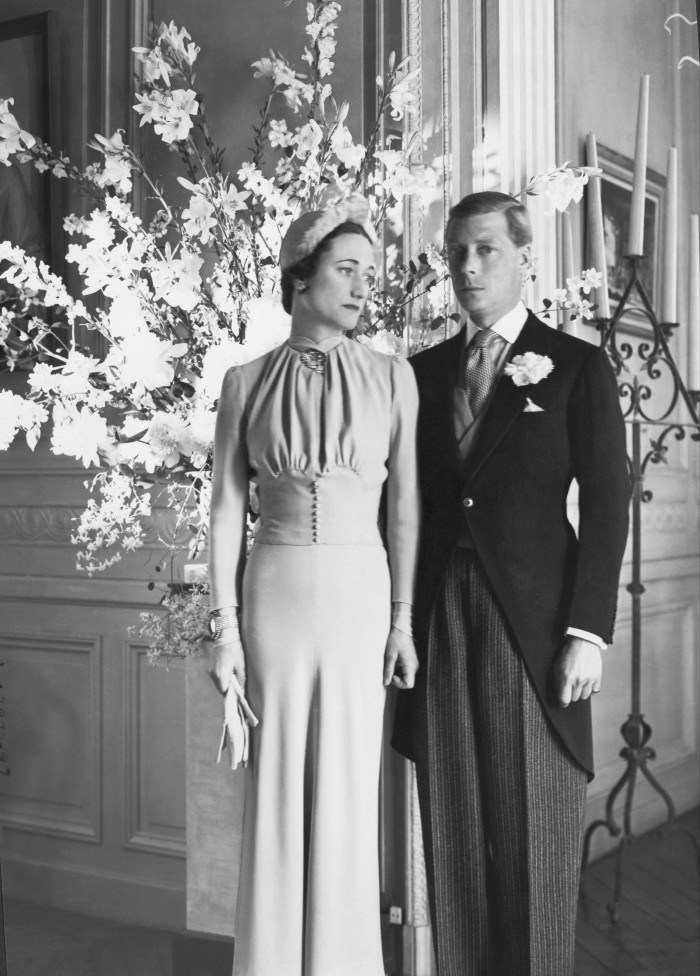
Spry was a vocal advocate for foraged material – wild clematis, brambles, weeds were all fair game – and, just as she inspired her followers to think beyond cultivated stems, a new generation of floral designers is reviving Spry’s fervour for the wild and idiosyncratic.
New York florist Emily Thompson was a sculptor before she turned her attention to manipulating foraged material into installations for parties, restaurants, fashion shows and window displays (including Jason Wu, Ulla Johnson and Proenza Schouler). For Wu’s AW22 show she created thickets of quince clambering up industrial concrete columns, dotted with Icelandic poppies in citrus shades and mountain laurel. “There’s a hunger for things that have movement and life and a feeling of place,” she says.
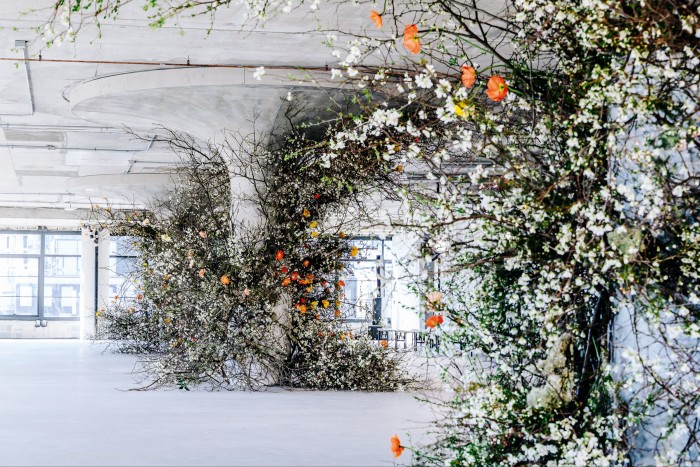
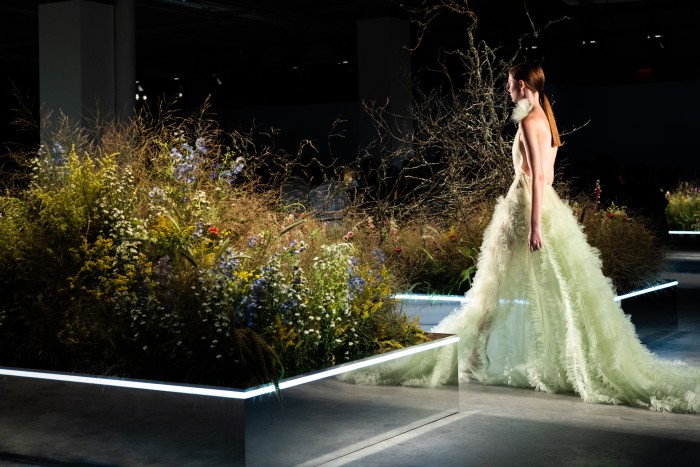
Thompson’s ethos stems from the “horrifying disrespect for materials” in the cut-flower industry, in which blooms are grown intensively, often with high water, heat and chemical use, refrigeration and long-haul travel. Local outdoor grown flowers produce around five per cent of the carbon emissions of imported stems, while foraged material often has the lowest carbon footprint, regrowing naturally.
Thompson’s work is a paean to what might be happening in the wilderness. Over spring and summer she follows the blossom up the East Coast to Canada, where her little black book of foragers – developed over 17 years in business – source the perfect branch or stem. “These are people who prefer to have their life in the woods,” she says. “They don’t live with technology and… are often complete outsiders.”
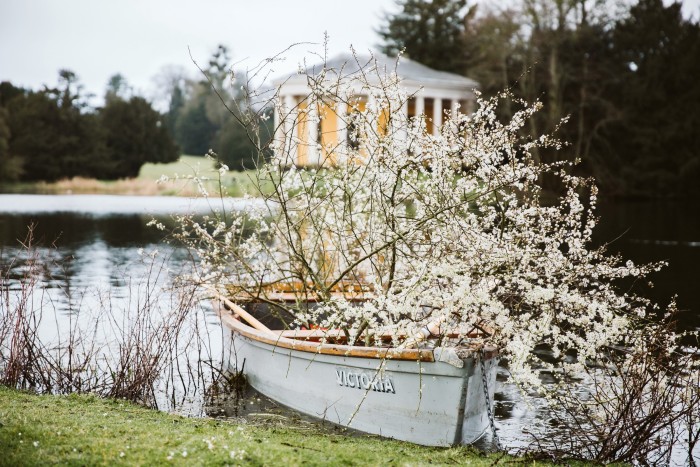
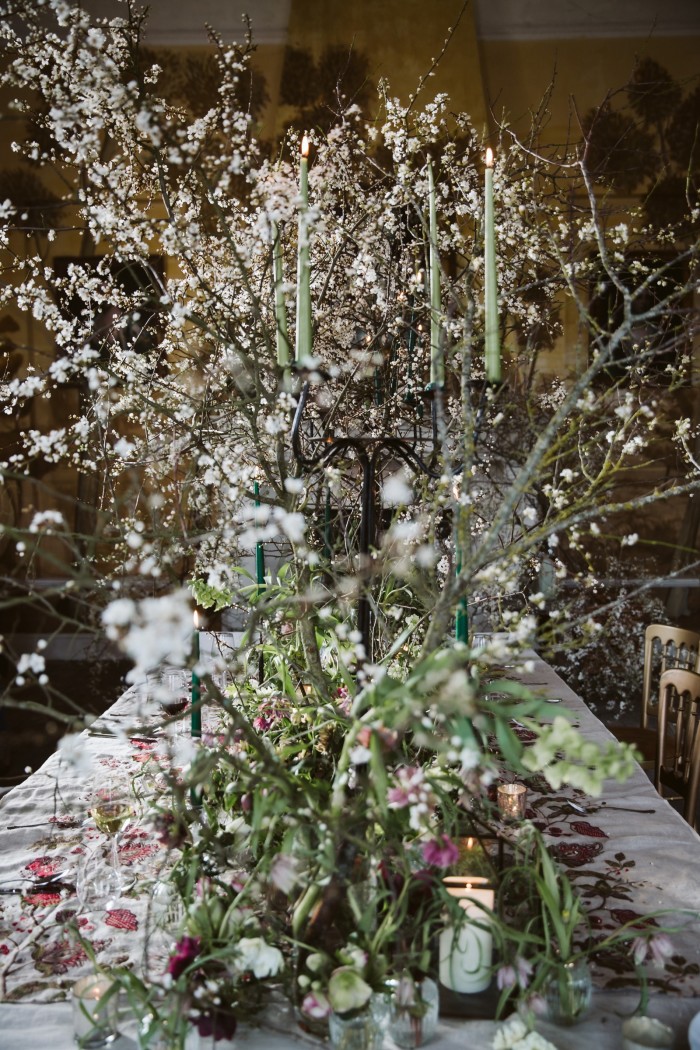
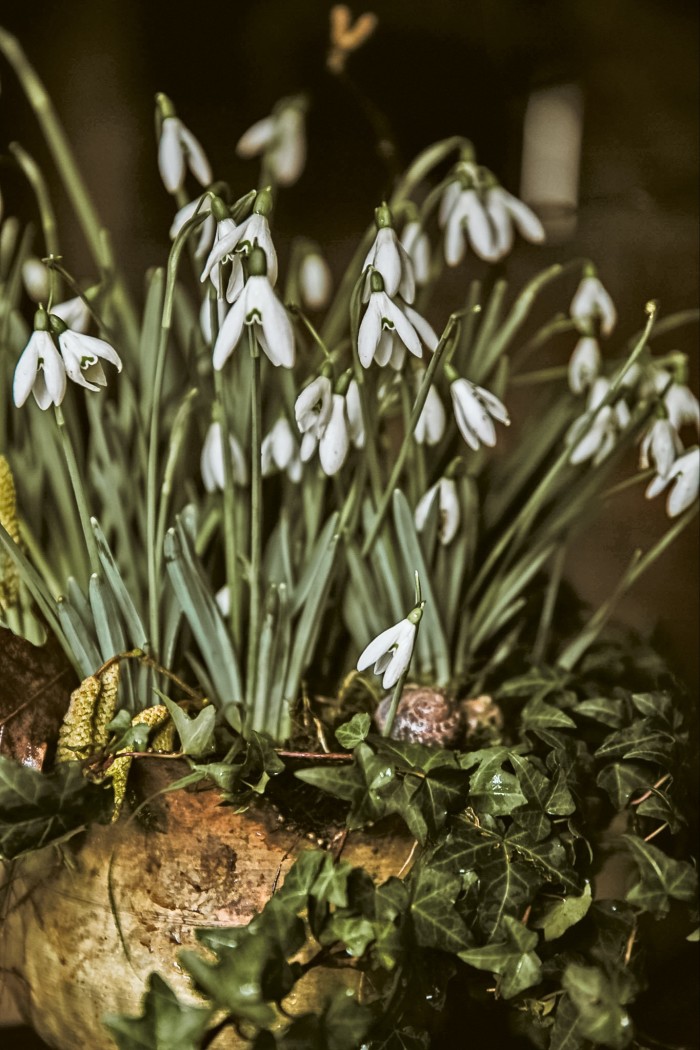
“It’s magical, grabbing the moment happening outside,” says floral designer Tattie Isles of Dorset- and London-based Tattie Rose Studio. Although the meaning of foraged has become quite muddled: flowers should only be plucked on one’s own land, or from someone else’s with permission. According to the Theft Act 1968, you cannot forage on communal land for commercial gain. And ethically, foragers should ensure they take no more than one-third of a plant to ensure regrowth. Isles started working with flowers 18 years ago and is currently preparing for a wedding that was planned for late spring to harness the frothy umbels of cow parsley that fill English country lanes at this time of year.
The cutting gardens
Flowers From The Farm is a directory of UK-based growers who sell sustainable materials and foraged flowers and foliage. flowersfromthefarm.co.uk
Sarah Ryhanen relocated her flower design studio Saipua in 2011 to World’s End, a 107-acre farm in the Hudson Valley, where she sources flowers and foliage for events from May to October. saipua.com
Former filmmaker and producer Juliet Glaves is a flower farmer and designer who often sources foraged materials from her land in Shropshire for events, weddings and film sets. julietglaves.com
Author, grower and designer Rachel Siegfried grows windswept stems on the boundaries of her Oxfordshire farm. greenandgorgeousflowers.co.uk
Leaning into the seasons brings its challenges, none more so than when the bounteous flowers of summer have long since faded. Last winter for a party in Scotland with 400 guests, Isles was faced with an abundance of evergreen foliage but nothing in flower – until she chanced upon an area of woodland on the host’s property that was carpeted with snowdrops. “We dug them up, planted them in containers and used them as the focal point for the scheme, before replanting them the next day,” she says. “It was so beautiful because it was something money can’t buy.”
Isles cuts her own material and also works with gardeners from clients’ estates. In December she collaborated with interior designer Flora Soames on her wedding at her family home in Barsham, north Norfolk. She and Soames’s gardeners gathered wild clematis, mistletoe, ivy, beech, spruce and vast branches of rose hips, and then added seasonal flowers: Paperwhite narcissi that had been grown for the event, amaryllis, hellebores and cyclamen – many of which were used as potted plants and later replanted in the garden. Over the summer, Soames had also dried hydrangea heads gathered from her mother’s garden: “Part of the story of that day was Norfolk and the place she grew up,” says Isles.
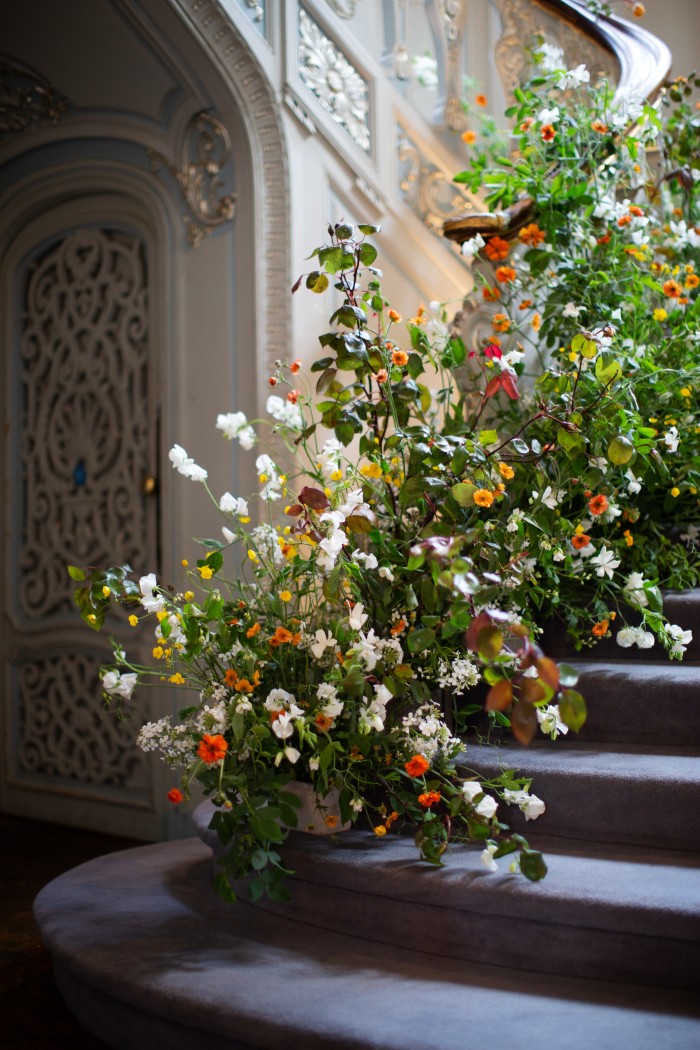
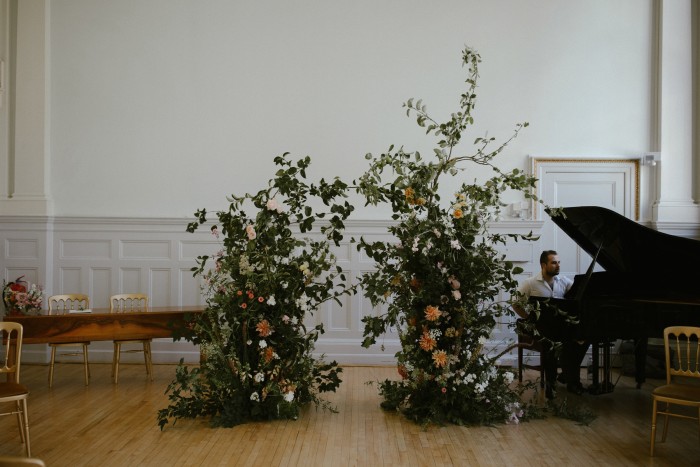
For many designers, harvesting in the wild delivers windswept, naturalistic forms they’d never find in a flower market. At London-based JamJar Flowers, head florist Talena Lowther works with growers around the country who source wilder branches and flowering stems on their land (often from biodiversity-boosting boundaries that are fully exposed to the elements), alongside cultivated stems. Last summer she flowered the grand staircase at the Savile Club in Mayfair for a book launch, recreating a late-spring hedgerow with winding dog rose, vivid orange geums, white sweetpeas and hundreds of tiny buttercups that had been meticulously picked one by one in Suffolk by grower Sue Taylor of The Floral Harvest. “It was just heaven. But oh, the time,” says Lowther of the task of picking wildflowers one by one.
Don’t presume these wild stems are any cheaper. Any benefit of “free” material is entirely offset by the legwork that goes into seeking it out. “It requires a huge amount of human labour and expertise,” emphasises Emily Thompson, “to locate it, and identify what can be cut in what quantities to satisfy the project.” Yet she also believes that these wild and unpredictable stems are the most inspiring to work with. “The excitement for me is in the chase, the hunt. It’s so thrilling to me because it’s hard.”
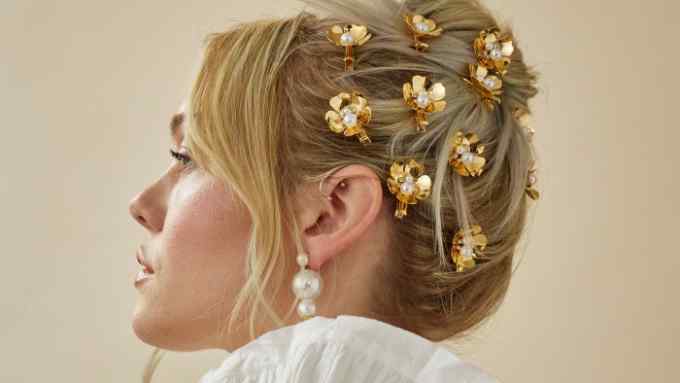
Comments